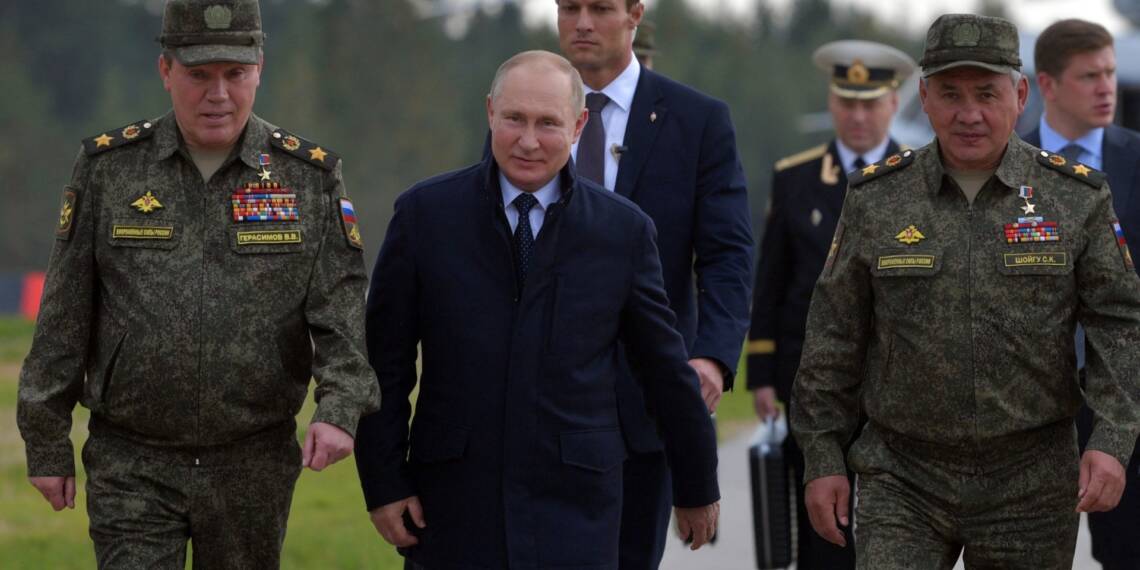Since the start of a full-scale Russia Ukraine war in 2022, Russia’s military performance has undergone a significant transformation. Much along the lines of its historical abilities spanning from the war with Napoleon to Germany, the Russian army appeared to take its time to manage the complex conflict. It faced major logistical issues, and unexpectedly fierce Ukrainian resistance, armed with modern NATO-supplied weaponry with complete western backing. But over time, the war has evolved into a proving ground for Russia, allowing it to learn, adapt, and build new military capabilities to take on the western bloc on its own.
Russia’s ground forces have undoubtedly proven their effectiveness and resilience. Russia has managed to take on and counter all kinds of NATO weaponry and military capabilities.
One of the most significant developments for Moscow has been the advancement of its electronic warfare (EW) capability. Many Western-supplied precision weapons—once considered highly accurate—have shown reduced effectiveness against Russia’s upgraded jamming and signal interference systems.
This includes systems like HIMARS and guided munitions, which had early success but now often fail to reach their targets or are intercepted. Moreover, Russia has fortified its frontline positions with intricate defensive structures, including minefields, trenches, and anti-tank obstacles like “dragon’s teeth.” These fixed defenses have made Ukrainian offensives costlier and slower.
Another critical area of improvement is Russia’s growing mastery of drone warfare. Russian forces have adopted drones for both reconnaissance and combat roles at an industrial scale. They now use drone swarms to locate targets, overwhelm air defense systems, and harass Ukrainian logistics. These tactics have occasionally extended beyond the Ukrainian theater.
For instance, Poland recently had to scramble F-35s and other aircraft in response to Russian drones that strayed into its airspace, reportedly via Belarus. Though the drones were likely unarmed and probing defenses, Poland’s need to deploy high-end jets to neutralize them illustrates the imbalance between the threat level and the cost of interception.
Polish generals described these incidents as “shooting a cannon at a fly,” underscoring NATO’s current vulnerability in low-cost, low-altitude air defense. In response, countries like Poland are now investing in layered defense systems that include machine learning-based radar, short-range anti-drone guns, and mobile interceptors. Nevertheless, Russia’s ability to challenge NATO airspace without triggering direct conflict reveals a level of strategic boldness not often seen earlier in the war.
In tactical terms, Russia has also improved its coordination between infantry, artillery, and air reconnaissance. Rotating units, using mobile artillery, and deploying reconnaissance drones allow Russian forces to avoid predictable patterns and reduce the effectiveness of Ukraine’s counter-battery fire. In some regions, Russian forces now rely on combined units involving motorcycles and drones to quickly scout and react to Ukrainian positions. These methods help probe Ukrainian defenses, gather intelligence, and exploit weaknesses with more precision than in the early stages of the war.
A particularly concerning development for NATO is Russia’s growing ability to counter Western military systems. French Admiral Pierre Vandier has publicly acknowledged that Russia has effectively learned how to counter many NATO tactics and technologies through its experience in Ukraine. This includes spoofing GPS-guided systems, intercepting satellite communications, and even targeting command-and-control nodes. While this does not negate the workings of many NATO systems, it does suggest that Russia no longer blindly suffers from their deployment and, in some cases, is gaining local or regional superiority.
This raises a deeper strategic concern: if Russia were to apply all these learned tactics, technologies, and battlefield experiences against other nations in the region — particularly Poland or the Baltic states — it could pose an undeniable threat. These countries, despite being members of NATO, would likely face immense challenges in dealing with such a modernized Russian force. Moscow’s ability to neutralize many NATO-standard weapons and tactics, gained through years of direct confrontation in Ukraine, could significantly undermine traditional Western military advantages.
Even with NATO support, managing Russia’s integrated drone warfare, EW dominance, and ground fortifications would not be easy. The conventional military doctrine many NATO countries rely on may no longer offer the deterrent power it once did — at least not without rapid adaptation and further innovation.
Russia has indeed managed to blunt many of the initial advantages NATO-supplied systems brought to the battlefield. If Vladimir Putin chooses to turn Russia’s sharpened military capabilities outward — toward Poland or other neighboring nations — the threat would be severe and immediate.
These countries would face a Russia that is no longer operating blindly, but one that has studied NATO systems closely and, in many cases, learned how to beat them. The war in Ukraine may have turned Russia into a battlefield veteran specifically moulded to take on western military capabilities — and for NATO, that changes everything.








